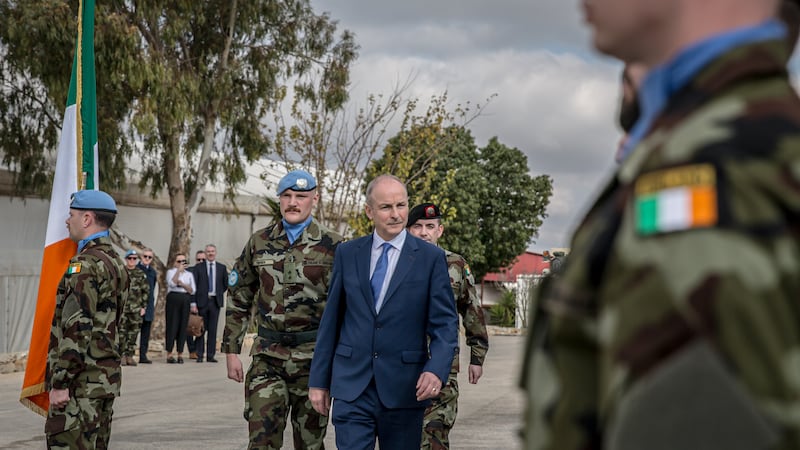What’s happening?
After months of talking about talks, negotiations between the Government and unions representing some 385,000 workers in the public sector are about to get under way.
The current deal, Building Momentum, which was originally intended to cover 2021 and 2022 but was then extended to cover this year, runs out in just a few weeks.
If a new one isn’t agreed many different groups among the workforce affected would start weighing up claims of a more individual nature and that, everyone agrees, could get messy.
Who’ll be at the table?
The Government, primarily in the form of senior officials from the Department of Public Expenditure and Reform (the big political figures only tend to enter the arena when a deal is close) on one side and officials from some of the 19 unions that represent public sector employees on the other.
RM Block
Those 19 unions are all represented on the Irish Congress of Trade Unions’ Public Services Committee but it is its officers – Kevin Callinan of Fórsa, John King of Siptu, Phil Ní Sheaghdha of the Irish Nurses and Midwives Organisation as well as John Boyle of the Irish National Teachers Organisation – who will lead their side of the talks and be present for all of the key sessions.
Who are those unions representing?
A huge range of people. The future pay of the State’s public sector health professionals, teachers, gardaí, army, local authority workers and civil servants among others will all be up for discussion over the coming weeks. Doctors, nurses and other employees of the HSE along with the various categories of teachers account more than half the total number between them.
[ Public sector pay talks to begin at WRC this week as unions agree to negotiationsOpens in new window ]
There are quite a few, smaller niche groups of workers involved as well with specific unions on the PSC representing everything from plasterers to medical scientists to vets.
Thousands more workers whose pay is linked to public service grades will also be directly impacted even though they are not actually part of the process.
So what does the Government want?
Industrial peace, stability and certainty but not, as is traditional for Ministers to point out at this stage, at any price. Each 1 per cent of pay increase costs the State around €250 million per year.
Paschal Donohoe and his Government colleagues would clearly like an agreement, ideally one that takes them beyond this time next year when they just might have other things on their minds, as it curtails any prospect of having to talk to all the groups individually, but not one that opens them to the charge from other quarters of being reckless.
And the unions?
Nobody will quote numbers publicly in advance of the talks but there is a feeling that significant increases are required to compensate members for ongoing cost of living issues.
Building Momentum, including the one-year extension, gave most of the workers affected total increases of 9.5 per cent over three years with measures specifically targeting lower paid staff a further 3 per cent.
As inflation for the three years is set to total around twice that 9.5 per cent figure, some unions leaders and many of their members, argue there is ground to be made up even before taking projected inflation for 2024 of 3.2 per cent into account. No clear indication, however, has emerged so far of what the union side believes is achievable.
Are other things on the table apart from money?
The Government will inevitably be looking for changes to work practices in some areas, what it regards as necessary modernisation that might yield greater productivity in some key areas.
Last time around the unions got the Haddington Road agreement for their members which was a significant selling point for the deal.
[ Public sector pay talks set to start on MondayOpens in new window ]
They have made clear in recent weeks they want changes to the ways in which the Government engages on local, more particular claims too.
At present, they argue, it is almost impossible for particular groups of workers to have historical or other claims that fall outside of the national agreement addressed even where the particular employer, perhaps the HSE or local authorities, is actually inclined to reach an agreement.
Ultimately, the unions argue, deals can be done but are then subject to approval by DPER whose veto, it is claimed, is exercised as a cost-containment measure. It is, they say, a hangover from the final crash and they want it removed.
How long might all this take?
Days or weeks, nobody seems at all sure, at least until they get into a room together and get a better sense of the other side’s bottom line. Everyone, however, says they want an agreement before Christmas and in reality, that probably means mid-December.
Hasn’t a lot of the groundwork already been done?
It seems not. Talks were held on the local bargaining element but they ended with an agreement. Some other informal contacts will have taken place and there is certainly an opinion in some quarters, that both sides will have a very clear idea where this is all going to land in the end but others contend it really is all there to be fought over.
So will there be a deal?
More than likely, yes. Right now the main issue appears to be how long it might last. Both sides certainly want one and the union negotiators will have a good sense of what they can sell their members.
All of the unions will ultimately be balloted on any agreement and the individual ballots will be weighted according to the size of the organisation with the largest membership. The extension to Building Momentum, however, was actually approved by every union involved, by huge margins in many instances.

















